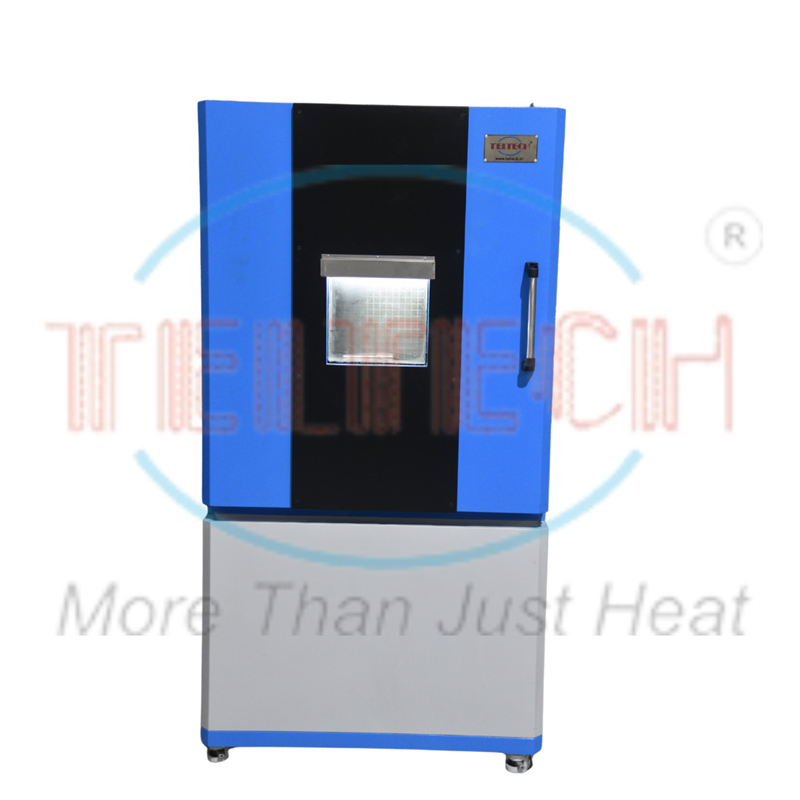
An Environmental Chamber is a controlled testing environment used to simulate a wide range of environmental conditions such as temperature, humidity, altitude, and pressure. These chambers are essential for testing the durability, reliability, and performance of products under real-world conditions.
Environmental Chambers are utilized across multiple industries, including automotive, aerospace, electronics, defence, and pharmaceuticals. By exposing products to extreme conditions, these chambers help identify potential design flaws, improve product reliability, and ensure compliance with industry standards. They can simulate temperature fluctuations, humidity variations, vibration, and even salt spray to ensure products are built to withstand diverse conditions.
-70°C to +180°C (customizable for specific needs).
Simulates temperature and humidity fluctuations.
Thyristorized PID controller, Touchscreen HMI and PLC-based system for customizable test cycles.
USB, Ethernet, and cloud-based monitoring for data analysis.
Custom configurations based on product size, test requirements, and industry needs.
Humidity control from 10% to 98% RH for climate testing.
Fast temperature transitions for thermal shock testing.
Ability to combine temperature, humidity, and vibration testing in one unit.
Over-temperature protection, emergency stop, and alarm notifications.
ISO 9001:2015, CE, NABL and other industry standards
Testing parts like sensors, ECUs, engines, and lighting systems for durability.
Evaluating the performance of avionics, military equipment, and aircraft components.
Ensuring the durability of electronic devices, PCBs, and circuit boards under thermal stress.
Stability testing of drugs and medical devices to ensure longevity and efficacy.
Verifying the operational reliability of machinery under diverse environmental conditions.
Testing product packaging for temperature, humidity, and pressure resistance.
| Specification | Details |
|---|---|
| Model | Customizable (Standard & Custom Models Available) |
| Internal Volume | From 100 L to 1000+ L (Small, Medium, Large, Walk-In Models) |
| Temperature Range | -70°C to +180°C (Custom Ranges Available) |
| Temperature Accuracy | ±1°C at steady-state conditions |
| Temperature Uniformity | ±2.0°C |
| Humidity Range | 10% to 98% RH (Relative Humidity Control) |
| Humidity Accuracy | ±2% RH |
| Cooling/Heating Rate | Up to 5°C per minute (customizable rates available) |
| Controller Type | Thyristorized PID controller, PLC-based, Touchscreen HMI Interface |
| Data Logging | USB, Ethernet, Cloud-based Remote Monitoring |
| Airflow System | Uniform air distribution for consistent test conditions |
| Power Supply | 415 V / 3-Phase (Custom Voltage Options Available) |
| Noise Level | < 75 dB at full load |
| Compliance | ISO 9001:2015, CE, NABL and other industry standards |
| Safety Features | Emergency stop, overload protection, and air circulation failure alarms |
| Construction Material | Stainless Steel (Interior), Powder-Coated Steel (Exterior) |
| Test Modes | Temperature cycling, humidity cycling, thermal shock, and combined testing |
| Warranty | 1 Year (Extended Warranty Available) |
| Optional Features | IoT Connectivity, Humidity Control, Vibration Integration, Custom Racks |